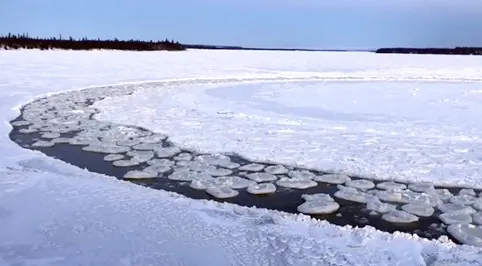
What causes these weird river ice pancakes?
What are ice pancakes and ice discs, and why do we like watching them so much?
They might look a tasty snack to eat with your hot chocolate, but you won't find these donuts on the coffee shop menu.
Ice pancakes, more properly known as ice pans, form when conditions come together just so on rivers and lakes, typically during the late fall or early spring, when the temperature tends to swing across a broad range.
While large ice sheets start to form over calmer waters, like lakes, when temperatures begin to drop, the turbulent flow of rivers disrupts this process. That makes river ice a bit of a different creature -- and gives rise to phenomena like the one seen in the video below.
The distinctive 'fluffy' look to the edges of the discs comes from a slushy type of ice that forms in rivers, known as frazil. Frazil slush is a mixture of these ice crystals and water, and it's the first type of ice you see in a river when it starts to freeze.
As the temperature gets colder, even the moving waters of the river can't entirely fend off freezing, and frazil clusters start to freeze into larger flat plates, separated by a layer of lingering slush.
If it weren't for the action of the water, these plates would ultimately join together to coat the river's surface. But even as the surface starts to freeze, the water beneath keeps flowing, and our plates get jostled, repeatedly bumping into one another, so they end up with raised slushy rims along their edges. The generally circular shape also comes from the repeated collisions, grinding off all the sharp edge.
That leaves us with separate pans of ice with the distinctive fluffy donut look; a mostly-frozen disc with a slushy border.
Editor's note: This article was originally published on November 19, 2019.
Sources: Dennis Kalma | Treehugger |